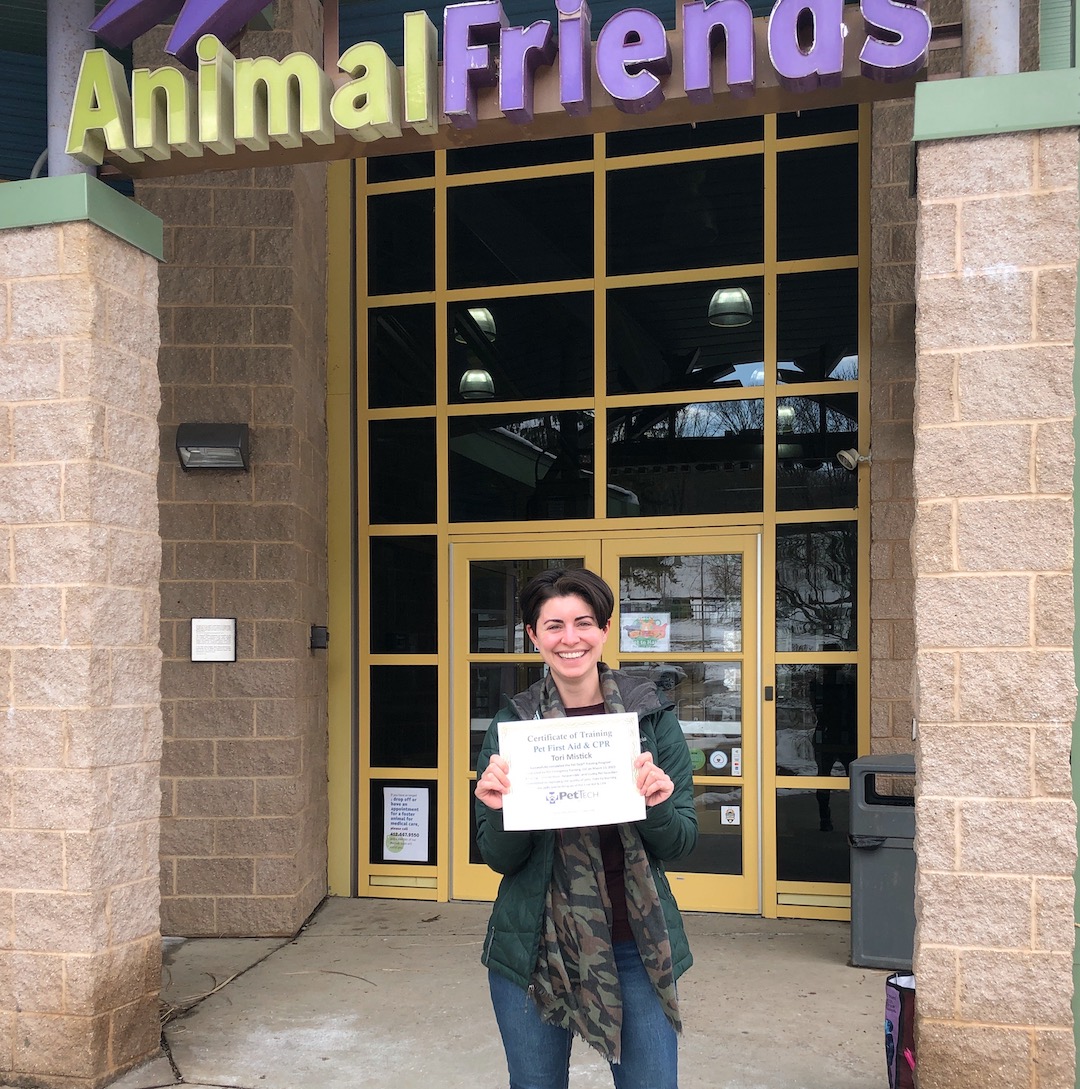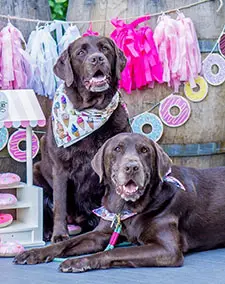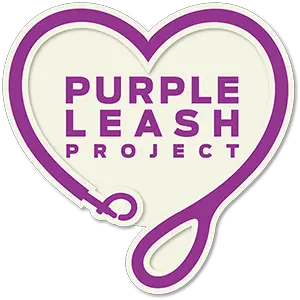I’m excited to share a list of what to put in a dog first aid kit. So many new pet parents don’t think about collecting these items until an emergency happens. Save yourself (and your dog) the stress and stock up on these essentials now.
The 24 essential first aid items in the list below will help you take care of your own pet or someone else’s in case of an injury or emergency. The last thing you want is for something bad to happen to your dog and to feel unprepared and helpless.
This list is something I was provided with when I got certified by PetTech in Pet First Aid and CPR. I took this 5-hour class in person at our local animal shelter and highly recommend it to other dog owners. Even after 20+ years of having labradors, I learned so much from this course!

When available, I link to the Amazon products for the first aid essentials on this list. I use affiliate links in my posts. That means I might earn a small commission if you buy through me, but it doesn’t cost you a thing! If you need an affiliate link for something not listed here, just ask and I can send you one.
What’s better for your Dog First Aid Kit: DIY or Store-bought
You can buy a lot of ready-made pet first aid kits online and at your local pet supply store. These kits can be a good place to start, but what I learned in my Pet First Aid Certification is that there are a lot of essential items that are left out of these store-bought kits. If you want to start with a pre-made kit and add to it, this one looks OK. But honestly, most of the ones I saw on Amazon include items that won’t help a dog like band-aids or adhesive moleskin and they don’t include enough of what you’ll actually use like a roll of gauze and saline solution.
When you assembling your own kit, all of the things on this list will fit in a small container or a zip-up bag like a soft cooler. If you travel with your dog, you’ll want to make sure a solid first aid kit is in your car at all times. You might want to have a duplicate kit that stays in the house. You might also put together a mini kit to take on hikes. It’s up to you! Whatever you do, it’s always a good idea to be prepared in case of an emergency.
Do I know that from experience? Well… a few months after I adopted Burt we were at a local dog park with our friends. All of a sudden, Burt came over to check in with me and we noticed his ear was bleeding. None of the dogs had barked or yelped and none of my friends had seen anything happen, but somehow Burt had a 1-2″ tear in his ear and it was bleeding a ton! I didn’t have any of the supplies on this list with me (other than the number of our closest emergency vet).
After taking that first aid course, now I know how to control a bleed and I also have the supplies to do it with! Don’t find yourself unprepared, stock up on these essential items for your pup.

24 ESSENTIALS ITEMS FOR YOUR DIY CANINE FIRST AID KIT
Everything on this list should have you covered in case of minor injuries, wound care or accidents. If something bad happens to your furry friend and you’re unsure of what to do, always call your vet or emergency animal hospital (here’s a list of all the emergency vets in Pittsburgh). They want to help you and your furry friend and can often coach you through many incidents over the phone until you can come in.
I hope this list of items helps you feel prepared so that you can go on more adventures with your dog while staying safe and healthy!
Quick note for my pet parents who get a little overwhelmed: There are a lot of supplies here! Start slow collecting the items and adding them to your dog’s first-aid kit. You don’t need to buy it all at once.
List of emergency phone numbers: Keep a card or piece of paper with emergency contact info. You never know if your phone battery will die. A dog first aid kit is all about being prepared just in case. This list might include your vet, the local emergency vet in your area, pet poison control center hotline and your own emergency contact.
Identification info for your pet: List their name, age, breed, sex, microchip info, health problems and list of any regular medications.
Your dog’s medical records: The most important record you want in your kit is your dog’s proof of vaccination. Your vet can print this out on your next visit or possibly even email it to you.
Photo of your pet: You won’t find this included in any store-bought first aid kits! But a printed photo of your pet is something you want to add to your DIY kit.
Gauze pads and rolls: Sterile gauze pads can be use to wrap small cuts, a bite or other wounds. The bigger your dog, the more gauze you’ll want to include in your kit. Gauze that you can wrap is better for dogs than adhesive bandages since they may not stick to the fur. This kit on amazon has gauze and other items.
Sanitary Napkins: These are designed to soak up lots of blood, so they can be a great item to include in your emergency pet first aid kit! Throw a few of the individually wrapped maxi pads in your kit.
Tape: If you need to wrap up a wound on your dog, tape is essential. I recommend 2 types of tape in your kit: first aid tape and duct tape. I was recently on an airplane when a passenger passed out and needed to be given a saline IV. The army medic who happened to be on board used duct tape to secure the IV to the man’s arm because the first aid tape was missing from their kit. Again, it’s always better to be prepared just in case! This kit on Amazon has tape plus gauze.
Ziploc bags: If your dog is vomiting or their feces contains blood, your vet might ask you to gather a sample. Regular poop bags will work, too. Just make sure you have some kind of plastic bags in your first aid kit. Shop for Ziploc sandwich bags.
Sterile Saline Solution: If your dog has an open wound or you need to do an eye wash on them, the best gentle solution you can use is saline. Buy the regular contact solution in a squirt bottle and you’ll easily be able to squirt that in and flush out a wound. Contrary to popular belief, it’s no longer recommended to use hydrogen peroxide to flush out cuts or bites. Shop for Renu saline solution.
Hydrogen Peroxide: Wait, didn’t I just tell you not to use hydrogen peroxide on cuts? Yes, I did! But you’ll want it in your DIY Dog First Aid Kit for another reason… to induce vomiting. If your dog eats something poisonous or toxic to dogs, call your vet or the pet poison control hotline and if they recommend it, you can use a small amounts of hydrogen peroxide to make your dog vomit. Here’s a 4 oz. bottle that will fit in your kit!
Scissors: You can add special bandage scissors to your kit, but honestly, any pair of scissors can come in handy. I can never have enough scissors, so I’d grab this 3 pack.
Antibiotic ointment: Neosporin is something you can dab onto scrapes and minor cuts to prevent a bacterial infection. I also stock a tube of this ointment called Silver Honey, it’s naturally antimicrobial and can help heel minor stings, cuts and hot spots (my lab Lucy tends to get those every summer, so I have lots of advice about hot spots!). I like to stock my kit with the individual packets instead of a big tube.

Digital thermometer: You may need to take your dog’s temperature if they’re not feeling well. You should have a rectal thermometer in your kit. I also recommend you add in a few small packets of vaseline or petroleum jelly to lubricate the thermometer before using it on your dog. Sidenote: I recently met the founders of Mella, a new pet care brand that’s created a non-invasive pet thermometer that measures the temp under their foreleg and saves it to an app (where the data can also be shared with your vet!).
Styptic powder: You can buy this is a powder or a styptic pencil. This will stop bleeding on minor nicks, cuts or clipped nails. Buy the powder on Amazon.
Dog booties or small socks: In case of a paw injury, a small bootie or sock can help prevent dirt and germs from reaching the paw pad. I like these rubber balloon style booties because they’re lightweight, waterproof and inexpensive to add to your kit.
Emergency thermal blankets: In case of hypothermia or shock, you might need to wrap your pet in something that will keep them warm, fast. A mylar “space blanket” is what you typically see marathon runners using. They fold up really small and won’t take up much room in your kit. Order mylar blankets on Amazon.
Extra leash and collar: I recommend you add a small slip lead to your first aid kit, that way it’s a collar and a leash. Actually, I keep a few of these in my car at all times! If you ever take your dog to day care or the groomer, they often give you these for free when you pick up your dog. Save them and add one or two to your kit. You can also order a 6 pack so you have extras.
Soft muzzle: If your dog is in pain they might bite you, a soft muzzle or cloth you can wrap as an emergency muzzle can prevent this. You cannot help your dog if you’re injured as well. This is a good muzzle for your first aid kit. Make sure to take the time to fit it to your dog so you know how to put it on in an emergency.
Collapsible bowl: This is another thing I have in my car at all times. A small collapsible silicone bowl can be used for water or food if you get stranded with your dog. This simple bowl from Chewy will do the trick!
Water: You can stock a re-usable water bottle or a big 2 gallon jug. Make sure you have plenty for your dog (and maybe yourself, too).

Antihistamine: Kids liquid Benadryl or a generic equivalent can be used to treat allergic reactions when advised by your vet or emergency hotline. Make sure you read the label and the antihistamine you buy does not contain xylitol (some do… xylitol is poisonous to dogs). The kids liquid Bendryl and be squirted into your dogs mouth with a syringe like this. that are dog safe in the right dosage (consult with your veterinarian).
Sugar packets, glucose gel or honey: If your dog experiences shock or seizures it can plummet their blood sugar level. Keep a little honey or sugar i your kit and you can rub it on their gums if needed.
Needle-nose pliers or Hemostat: A hemostat looks like a pair of scissors but they are dull at the end. These or needle nose pliers can come in handy if foreign objects need to be removed (tweezers could also come in handy for splinters). Your dog may get something lodged in their throat, and a hemostat would be a great tool to remove it without risking having your hand bit. Here’s a set of 8″ hemostats and needle nose pliers.
Tick Key: Last but not least on this list is a tick key! Where we live in Pennsylvania there are a ton of ticks. A tick key is a small tool that can fit on a keychain (there’s even a pink one!). It makes it easy to pick a tick off of your dog. Even if your dog take a flea and tick preventative and has the lyme vaccine, you still want to check your dog for ticks after being outdoors. When you remove the tick you should squash it instead of flinging it into the grass. You don’t want to leave it there to bite someone else.
What Else Do I have in my Dog Mom First Aid Kit?
This list is very comprehensive, but as a crazy dog mom there are a few other first aid supplies I want to mention. Just in case you like to be extra prepared like me!
I took a whole Pet First Aid training course and have a book from that day that I can keep with my kit. If you did not take a course, I recommend picking up a pet first aid book. Our dogs can get into all kinds of situations that we don’t expect, so it’s nice to be able to reference a book full of the facts. This book by Amy Shojai is the best one you can pick up.
Another item our course instructor Karen Sable mentioned that I don’t see on any other pet first aid kits isa headlamp for you! If you’re trying to handle an emergency with your pet in the dark, you don’t need to juggle holding a flashlight with everything else going on. Pick up an inexpensive headlamp and add that to your DIY kit… this is why we can’t rely on just the store-bought versions, a flashlight or headlamp would never be included in those!
I hope this post was helpful to you and gives you the confidence to stay safe on adventures with your furry friend! Share this post with a dog parent friend so they can be as prepared as you and I!
If you like this post, check out these:
Was it worth it to train my dog as a therapy dog?
What’s a West Paw Toppl and How do you Use It?
Built In Home Dog Wash Renovation Reveal
24 Hour and Emergency Vets in Pittsburgh
PIN THIS!






Excellent list for all dog Moms! I would like to share the first aide list, could you send me a link? The biggest problem in kits in Florida is the liquids evaporate quickly so they need checked frequently
Thank you
Thanks for reading the post! You can share the link by copying and pasting it or go to File > Share and pick from email etc. Regarding liquids, I also learned that Hydrogen Peroxide can expire, so it’s good to check everything once in a while. Stay safe out there!